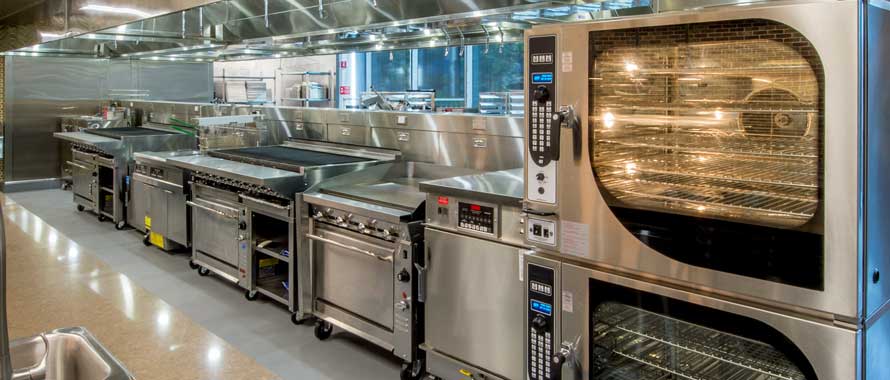A refrigeration unit breaks down in a warehouse full of frozen food. A hospital’s generator malfunctions internally and stops supplying power. A power surge burns out an integral piece of equipment in a manufacturing facility. In each of these instances, Equipment Breakdown insurance, also called Boiler and Machinery insurance, is required to cover the costs associated with the failure of mission critical machinery and electrical components.
Equipment Breakdown policies cover expensive equipment breakdowns outside of Commercial Property policies as a result of internal causes, such as mechanical failure, electrical short circuiting, or motor burnout.
“Typically a Commercial Property policy only covers damage to equipment from an external cause, such as a fire, flood, or a tree falling on a roof,” said Clay Kadlic, Broker, Burns & Wilcox Brokerage, Tampa, Fla. “These days, delicate electronic components that businesses rely on can break down more easily and are generally more costly to repair or replace than the traditional mechanical equipment found in a large manufacturer.”
In talking with clients about Equipment Breakdown coverage, brokers and agents should be aware of the following common myths that Kadlic and Bryant Steele, Associate Managing Director and Broker, Burns & Wilcox, Chicago, Ill., have heard:
Myth 1: The most important part of coverage is replacement of equipment.
“After a piece of equipment breaks, replacing it can be equally as important as business interruption costs, or loss of income, associated with a critical piece of equipment breaking,” said Steele. “Brokers should ensure that businesses know how long work would be affected and the impact to the organization for each piece of equipment that goes down.”
Consider an automotive supplier whose molds were destroyed, for instance. This would halt business for the immediate future until the molds were replaced. If the supplier is unable to fulfill, they may lose the contract.
Steele added “Contingency plans should be in place for these instances, and carriers will look for that when a broker submits the application.”
According to Dan Finn, Vice President of Loss Control, Afirm, a premier provider of premium audits, inspections and risk solutions, lack of a contingency plan or an insufficient plan could result in one or all of the following: prolonged down times, loss of income, loss of clientele, and business failure. “Having a comprehensive, properly managed plan in place is key to mitigating losses.”
Myth 2: It acts like a warranty for equipment.
“Wear and tear is not covered under an Equipment Breakdown policy,” said Steele. “Machinery should be well-maintained and have a maintenance schedule to be sure that it is covered.”
Large machinery is meant to last decades, and generally those pieces of machines have very robust maintenance schedules. “For larger clients, for instance, carriers look for these schedules to ascertain the viability of the machines and to ensure they have not been sitting and rusting for years,” Steele added.
“For larger risks, we have two main concerns – the upkeep on the machinery and how critical it is to the operation of the business,” said Steele.
Kadlic adds that well-maintained machines are covered for the following six issues:
- Mechanical breakdown, including rupture or bursting caused by centrifugal force;
- Artificially generated electrical current, including electrical arcing, that damages electrical devices, appliances, or wires;
- Explosion, other than combustion explosion, of steam boilers, steam piping, steam engines, or steam turbines;
- An event inside steam boilers, steam pipes, steam engines, or steam turbines that damages such equipment;
- An event inside hot water boilers or other water heating equipment that damages such equipment; or
- Bursting, cracking, or splitting.
Myth 3: Equipment Breakdown coverage only covers the actual equipment.
Equipment Breakdown coverage covers the cost to repair, replace, or rent a piece of equipment to continue operations. Additionally, it covers much more, including, but not limited to:
- Business Interruption
- Lost business income
- Perishable goods, if refrigeration is lost
- Liability coverage if it injures others
- Damage to a building caused by the breakdown
Kadlic explains, “Equipment Breakdown insurance can be inexpensive depending on the risk, and brokers should ensure that clients consider it for the long-term viability of their commercial businesses. We recently renewed a policy covering $12 million in value for $2,400 in yearly premium.”
Steele says, “It is important to note that Equipment Breakdown is not an all risk policy. A variety of issues can happen with a computerized system, and it can be more difficult to find the business interruption exposure and determine claims in this changing technological environment.”
While Equipment Breakdown insurance policies are optional they have the ability to protect a multitude of businesses from incurring large expenses that may damage the bottom line should equipment fail. Brokers can attach these policies to a Commercial Property form and write them as standalone coverage, which may be the case for those who have had claims in the past or very old equipment. For clients, a broker recommending this policy may mean the difference between being profitable and not, should machinery cease to operate.




